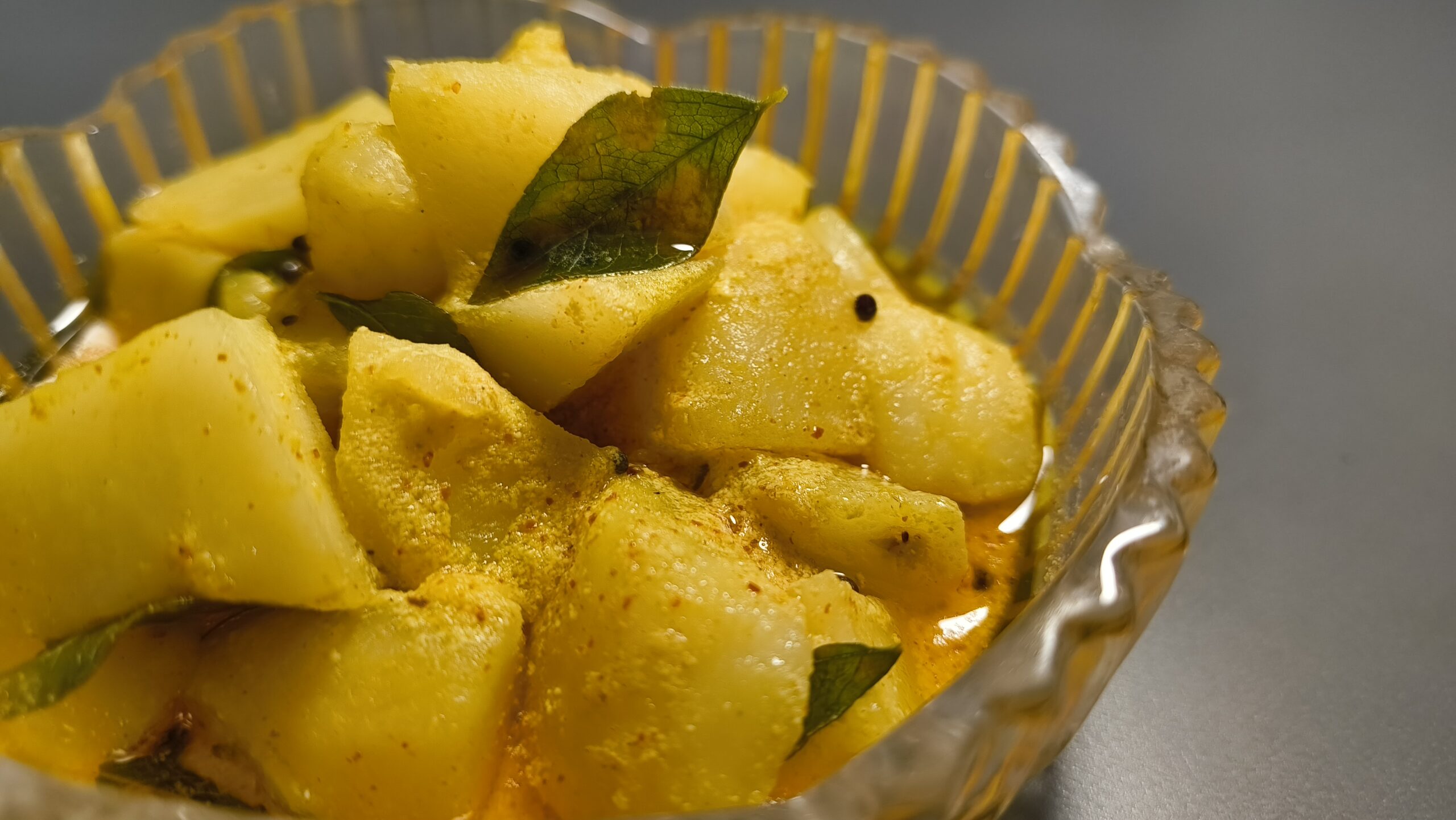
Soon after getting married, Mamta had to begin cooking out of necessity. Attributing her current culinary prowess to the many supportive women in her life, Mamta learnt the difference between cooking food and “good” food when she became a mother. Her daughter’s demands of continuously trying new flavours was a sureshot way for her to experiment with dishes and sharpen her skills in the kitchen.
“Watching my mother and sister-in-law cook played an important role in teaching me how ‘everyday food’ was made,” says Mamta. Additionally, following recipe videos online allowed her to develop an intuitiveness while cooking. While Mamta is certain of being an “okay-ish” cook, she is immensely proud of her Aloo Dahi ki Subzi. She gleaned this recipe from her mother’s repertoire, and still gets excited when it is made in their household. Mamta, and her nephew Ashish, both enjoy eating this subzi with white bread! According to Mamta, they both have developed similar tastes as she has fond memories of feeding Ashish as a baby, and he perhaps picked up that trait from her.
| Potatoes, boiled (medium) | 4 |
|---|
For the gravy:
| Yoghurt | 1 cup |
|---|---|
| Coriander powder | 1 tablespoon |
| Turmeric powder | 1½ teaspoon |
| Chilli powder | 1 teaspoon, or to taste |
| Salt | to taste |
| Water | 1 cup |
For the tempering:
| Cold-pressed peanut oil | 2 tablespoons |
|---|---|
| Mustard seeds | 1½ teaspoon |
| Curry leaves | 5-6 |
| Green chillies, split lengthwise (small) | 1-2, depending on spice tolerance |
What You Will Need
Mixing bowl, whisk, kadhai
Instructions
Peel the boiled potatoes and cut them into bite-sized pieces.
In a clean mixing bowl, whisk together the yoghurt, water and the powdered spices until smooth and well mixed.
In a kadhai, heat the oil on a medium flame.
Once hot, add the mustard seeds and wait for them to splutter. Immediately add the curry leaves, followed by the green chillies. Mix well for about 20-30 seconds.
Add the potatoes and stir well enough to ensure all the potatoes are fully coated in the oil.
Now, in one hand, hold the ladle/spoon to mix the potatoes, and in the other hand, hold the yoghurt mixture.
Slowly pour in the yoghurt mixture while continuously stirring the contents of the kadhai. This is a crucial stage in the cooking process as the vigorous motion will ensure that the yoghurt does not easily curdle. This will also allow the potatoes to release their starch into the gravy, acting as a binding agent and preventing further curdling.
Once all the yoghurt is added, turn up the flame on high and allow the gravy to come to a boil while stirring continuously. This should take around 4-5 minutes.
When the gravy comes to a boil, stop stirring and allow it to simmer on a low flame for about 8-10 minutes.
While the gravy is simmering, lightly mash some of the potatoes in it to achieve a thicker consistency. The gravy can also be of a thinner consistency if you prefer so.
Garnish with freshly chopped coriander and serve hot with rice, chapatis, or even sliced white bread. Ashish recommends eating it with puffed rice too!
The Locavore’s Digital Media Lead, Ashish Sharma, and his paternal aunt, Mamta, discuss Mamta’s memories of food as a part of ‘Longing for Home’, an oral food memories project from The Locavore’s immersive installation at the Serendipity Arts Festival 2023.
Listen to the complete oral memory by visiting this link: Aloo Dahi ki Subzi
You must be logged in to rate this recipe.

Sign in with email

